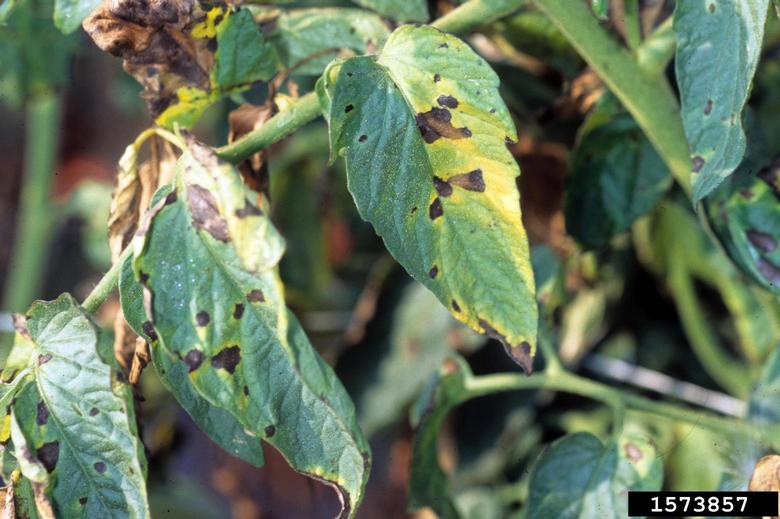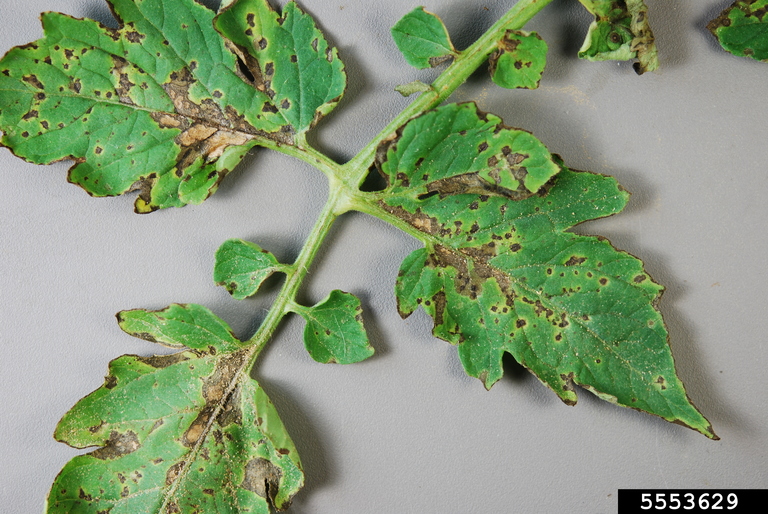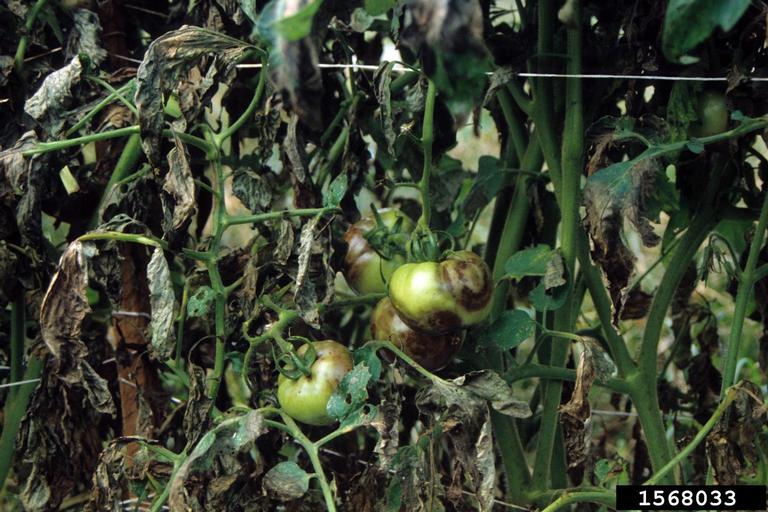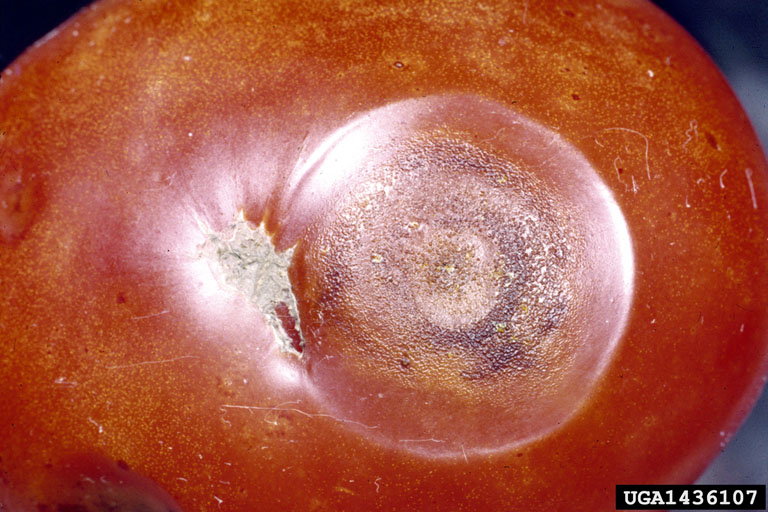Preventing Pesky Tomato Diseases
Every winter, backyard gardeners have dreams of lush, ripe, disease-free tomatoes. Come February, we linger over seed catalogs, carefully choosing which to start. In choosing seeds, however, it’s worthwhile to pause and consider the obstacles nature may throw at us, including common tomato diseases.
Preventing tomato diseases can begin with choosing high-quality, disease free seeds, or disease resistant tomato cultivars.
In order of occurrence, the most common diseases are: early blight, late blight, Anthracnose, and Septoria leaf spot. Although conclusive identification of a pathogen requires diagnostic lab confirmation, some clues can point to the correct diagnosis. In addition, being alert to where and when the disease is present and what conditions favor its development is invaluable.
Early Blight (Alternaria solani)

Early blight is one of the most common diseases of tomatoes. It is a fungal disease that causes symptoms on foliage, stems, and fruit, often beginning when the plant is flowering. The infection first appears on older foliage as small black to brown spots. Subsequently, lesions develop concentric rings in a distinctive, bullseye pattern. Surrounding tissue may become yellow.
Septoria Leaf Spot (Septoria lycopersici)

Septoria leaf spot is a fungal disease that often occurs simultaneously with early blight. The lesions caused by Septoria are consistently small, circular, and tan to grey with a dark brown margin. As with early blight, the lower leaves are affected first.
Late Blight (Phytophthora infestans)

Cool and moist weather arriving later in the season favors the development and often rapid spread of late blight. Leaf lesions begin as tiny, irregular shaped brown spots that quickly grow to nickel sized olive-green or brown spots. Sometimes the lesion border is slightly yellow or has a water-soaked appearance. Brown to black lesions form on upper stems and leaf petioles. Under moist conditions, after a rain or with the early morning dew, white fungal growth may appear. Tomato fruit develops brown spots.
Anthracnose (Colletotrichum species)

Cool and wet weather favor the development of Anthracnose. Infected plants develop dark, water-soaked lesions on their stems, leaves, and fruit. The center of these lesions may become covered with pink, gelatinous masses of spores. Infection starts in late spring and is found on lower leaves.
Selecting Seeds to Prevent Diseases
All common diseases of tomato can have devastating effects on a crop, wiping it out in a matter of days; in the case of early blight, Anthracnose and Septoria, the organisms overwinter in seeds, soil, and garden debris.
An initial step in preventing fungal tomato disease is using high-quality, disease free seeds. You can also try growing disease resistant tomato cultivars, available through a number of suppliers, including but not limited to Fedco, Johnny’s, and High Mowing. Information about disease resistance can be found in catalogs and online. Each supplier provides a key indicating which disease the plants are resistant. Careful study of this information makes for fascinating reading, especially in mid-winter.
Have dreams of disease-free tomatoes? Learning about common tomato diseases in New England, the conditions that favor their development and how to choose disease resistant varieties is just the start. Using good cultural practices such as removing and discarding crop debris at the end of the season, rotating where tomatoes are planted in the garden, and proper staking and pruning will help reduce disease issues. Learn more about growing healthy tomatoes.
UNH Cooperative Extension Master Gardener volunteers share information about home, yard, and garden topics with the people of New Hampshire. Got questions? Master Gardeners provide practical help finding answers to your questions through the Ask UNH Extension Infoline. Call toll free at 1-877-398-4769, Monday to Friday, 9 a.m. to 2 p.m., or e-mail us at answers@unh.edu.
Related Resource(s)
Do you love learning about stuff like this?
SUBSCRIBE TO Granite State Gardening newsletter
Got questions? The UNH Extension Yard and Garden Infoline offers practical help finding answers for your yard and garden questions.
Call toll free at 1-877-398-4769, Monday to Friday, 9 a.m. to 2 p.m., or fill out webform.

